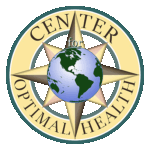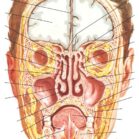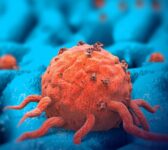D
Dental Pain
IMPORTANT NOTICE
This information is for educational purposes only, to facilitate quality conversations between patients and their personal physician(s). Several essential considerations are required to safely administer any protocol for an individual. This information is NOT intended to diagnose, treat or encourage self-treatment of any medical condition.
Dental pain can affect any of the structures of the mouth, including the teeth, gums, tongue, lymph nodes, salivary glands, cheeks, tonsils and their blood and nerve supplies.
Dental pain can overlap with sinus pain. Both are usually involved when the upper jaw is involved.
Focusing on one region or organism is inherently fallicious, since there are many co-factors that determine the health of the mouth and its region.
Regarding the biome of the mouth, sinuses and skull, there is growing evidence of co-existing fungi (such as Candida), viruses (such as Herpes), bacteria and other poorly characterized infectious agents that contribute via signaling, synbiotic and parasitic processes.
The majority of sensation from the teeth, jaw and sinuses travel along one main nerve, the Trigeminal nerve, which has several major and minor branches. The only other sensory nerves are those to the tongue, and indirectly via certain sympathetic and parasympathetic nerves. While a certain degree of localization is possible…,

This page is under development. Working links will provide starting information. Please let us know about your interest in this page by emailing us here, and check back soon.
File Access
Dry Mouth (Xerostomia)

Immune, Allergy & Infection Program
References (from pubmed)
Managing Chronic Inflammation.2006
Essential Fatty Acids (Fish Oils, Omega-3 Oils, other) (new tab)
Nothing-Boring-About-Boron.2015 (for inflammation) More on Boron here
Low-Grade Inflammation in Chronic Infectious Diseases Paradigm of Periodontal Infections
Adipose Tissue Inflammation- A Cause or Consequence of Obesity-Related Insulin Resistance
Root Canal
 A root canal is a procedure where a specialized dentist, an endodontist, cleans out the nerve canals of an infected/dying tooth, avoiding extraction. The tooth then is dead, acting similarly to an implant. After the canals are cleaned out, medication is instilled into the canals and then the tooth is capped.
A root canal is a procedure where a specialized dentist, an endodontist, cleans out the nerve canals of an infected/dying tooth, avoiding extraction. The tooth then is dead, acting similarly to an implant. After the canals are cleaned out, medication is instilled into the canals and then the tooth is capped.
While this has been a standard procedure for decades, numerous dentists beginning with Hal Huggins raised serious concerns about the long-term safety of the procedure. Unfortunately, unlike a modern implant the dead tooth contains miles of microscopic canals which eventually become populated with bacteria, yeast and other critters. These critters make toxins that can then affect the health of the entire body. There are cases of people with chronic illness stemming from one bad root canal; upon extraction of the tooth health vastly improved. Therefore in holistic medicine, root-canals are strongly discouraged, and when possible, removed.
The question becomes what to do with an infected tooth? In both the case of an abscess and an old root canal, the concern is that the teeth are close to the brain and infection can spread. So there are three choices: heal the infection (if possible), root canal, or extract the tooth. Whether an infection at a late stage can be healed remains a controversial question and can only be addressed with the evaluation of a knowledgeable practitioner.

Thomas Levy MD, a cardiologist, lawyer and vitamin C champion worked with Huggins for years and co-wrote a book with him that is available on Amazon (link here, new tab, may not work). The connection between gum/mouth disease and the heart is now well-established. Oral infections can spread through the bloodstream not only affecting the blood vessels and heart but potentially every organ.

This page is under development. Working links will provide starting information. Please let us know about your interest in this page by emailing us here, and check back soon.
Related Links
Skull Medicine
Toothache
Gum Disease
Dental Cavities

This page is under development. Working links will provide starting information. Please let us know about your interest in this page by emailing us here, and check back soon.
Related Links
Skull Medicine
Toothache
Gum Disease
Whey Protein
Dairy from female mammals contains two proteins, whey and casein. They vary by species (human, cow, goat, sheep, etc). Whey protein has some valuable amino acids but also can be allergenic. More to come…









